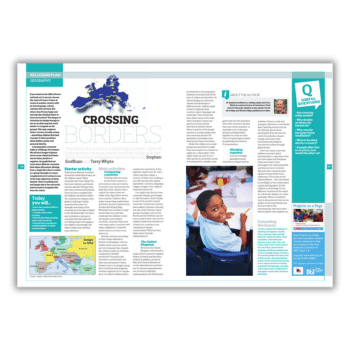The notion of a ‘country’ is anything but fixed – after all, there are four times as many countries today as in the 1950s. This countries lesson plan will fascinate your pupils…
If you stand on the cliffs of Dover and look out to sea you can see the coast of France. France of course is another country with its own language, culture, customs and currency.
But where does France begin and end and who decided where to draw the borders?
The shapes of countries are simple enough to see on an atlas map but much harder to recognise on the ground.
This countries lesson plan explores what a country actually means – something children find hard to grasp. It raises questions about politics, power and personal identity.
Learning about countries helps to challenge stereotypes. We all have images of places we’ve never visited and these can be either positive or negative.
As pupils find out more about different countries their ideas will mature. Moving from a single idea about a nation or a group of people to a more complicated set of notions is one of the main objectives of these lessons.
There is nothing neat and simple about the real world and we need to recognise this from the outset.
Learning objectives
- Learn that countries differ in shape and size
- Consider what makes a country
- Find out about the countries which make up the UK
- Find out how countries are working together to tackle world problems
Dr Stephen Scoffham is a visiting reader and Terry Whyte is a senior lecturer at Canterbury Christ Church University. Stephen is also advisor for the UK in Maps and World in Maps, published by Collins.













